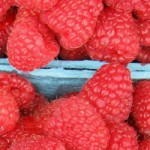
What is organic food anyway? And what’s the big deal?
Here’s a brief overview, with some excerpts taken from the forthcoming 2012 book I have been writing on organic food. Though some of you more advanced readers may know some of this already, bear with me, because you might find something here that you did not know…
The Environmental Protection Agency estimates that 90% of all fungicides (which kills mold), 60% of all herbicides (which kills weeds), and 30% of all insecticides (which kills insects) are potentially cancer causing.
Fungicides, herbicides and insecticides are commonly used on conventionally grown produce. That’s your typical market bought fruits and veggies. The stuff your mom said was good for you.
No, mom wasn’t trying to kill you. She was right. The foods are good for you, but how they are produced is dangerous. When you’re eating the food, you’re also eating the chemicals.
So what does the term “organic” actually mean?
It means that produce has to be free of synthetic chemicals and pesticides.
It means that the food in question has not been genetically modified or irradiated.
It means the fertilizer used on the food does not contain sewage sludge.
With regards to animals–
It means that animals are not fed growth hormones, antibiotics, or feed made from animal byproducts.
It means that animals as a rule must be fed with organic feed for at least one year.
It means that animals are not locked up, and by rule, must have access to outdoor activity.
(That last one means that they are not forced to play sports, but are encouraged to do so..:) Ok, enough with the jokes. Sorry I had to lighten the mood here. This stuff gets so intense!
Actually, it means they must be able to roam around outdoors and not be stuck inside a pen or cage all day.
What do the labels mean?
“100% Organic” means that 100% of the food’s ingredients are organically produced.
“Organic” on the other hand, means that 95% of the food’s ingredients are organically produced. Finally, “Made with Organic Ingredients” means that least 70% of the food’s ingredients are organically produced, and the other 30 percent must come from USDA’s approved list sources.
What about “free-range” and “free-roaming”?
Now, in regards to the non-organic terms, “free-range” and “free-roaming” that apply to animals (like chickens), it means that access to the outdoors for the animals must be for “an undetermined period each day.” Literally, that is the law.
And “natural” and “all natural”?
Be aware that the terms “natural” and “all natural” has nothing to do with being organic. The USDA defines “natural” as containing no artificial flavoring, colors, chemical preservatives, or synthetic ingredients. As long as manufacturers follow that rule, they can call anything “natural”!
Feeling a bit anxious at this? Don’t be. It is what it is, and now that we know this, we can act accordingly. “Education, not medication” is a buzzword saying amongst the enlightened. Make it yours!
In forthcoming articles, we’ll get more into the benefits of organic food.
Change your health, change your life,
Michael
If you like this article, please comment or share with your friends…:)
* Find “The top 10 foods that pharmaceutical companies don’t want you to know about” here.

